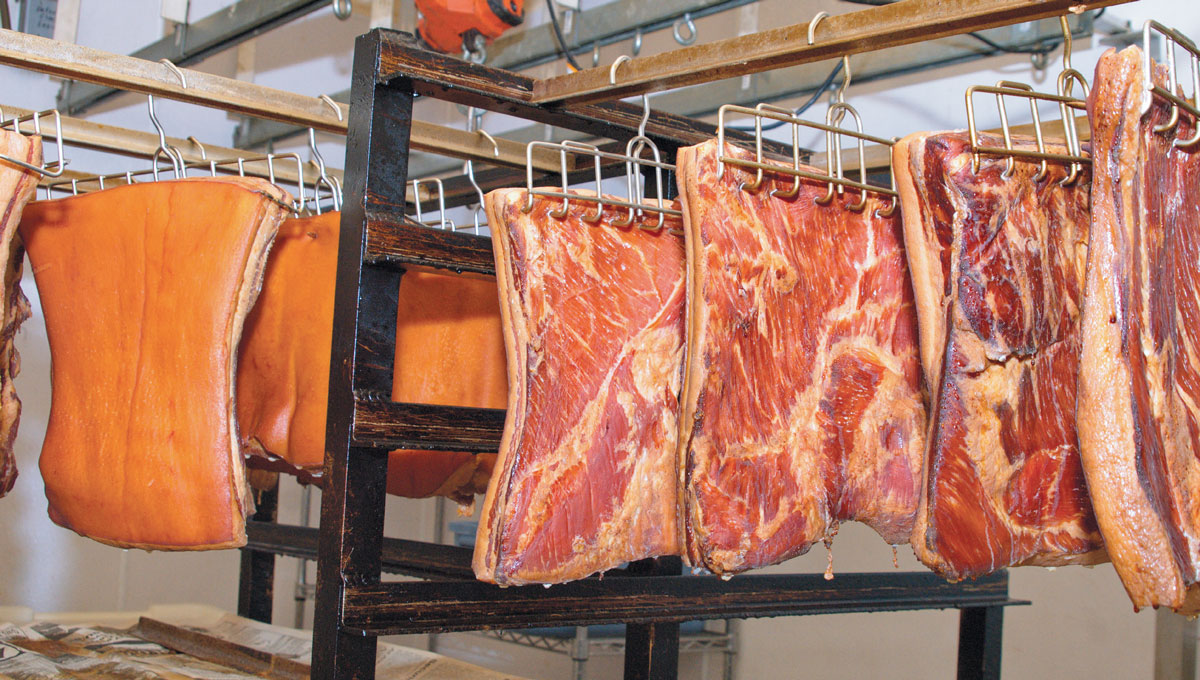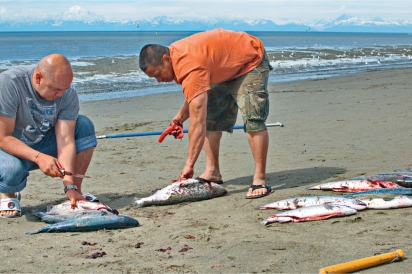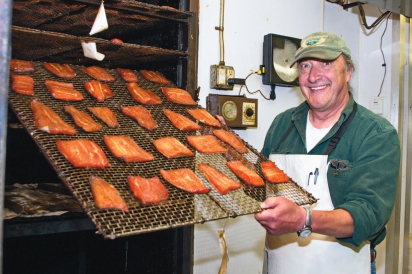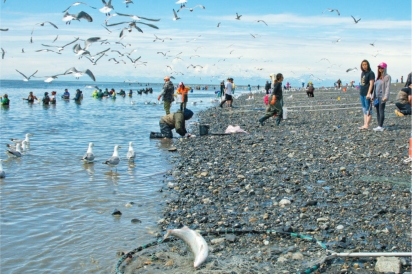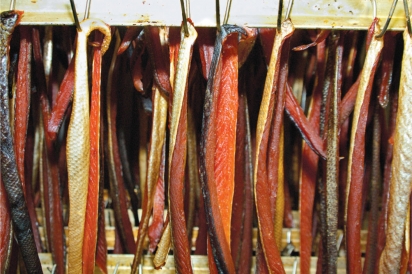Good Smoke
The Flavor of Fall in Alaska
Fall in Alaska brings with it the scent of wood smoke. As the long summer days come to an end, the first cool evenings signal that it’s time to light wood stoves across the state. It’s also time to preserve the bounty of summer, be it fish, wild game, or a family pig. Smokers, both personal and commercial, are lit off and begin working their magic on fresh, local foods.
Smoked foods have a long history in Alaska. If you walked down the streets of a town in Gold Rushera Alaska, you would smell smoke in the air (along with other less savory odors). Smoking food helped to preserve it in the days before refrigeration, and smoke infused everything—even the beer. Most of the early breweries malted their own barley, which required drying fresh barley in a kiln fired with hardwood. In Alaska the only hardwood available for this process was alder, which would have lent these beers a distinct flavor (especially the porters and stouts, which need highly-kilned malts to achieve their dark color). Only with the introduction of smokeless heat sources, like electricity and natural gas, did the ever-present flavor of smoke begin to fade from food and drink in Alaska.
This doesn’t mean that Alaskans have turned their backs on smoked foods. Residents harvest a tremendous amount of salmon each year via subsistence, personal use, and commercial fiheries. For example, the personal use dipnet fishery on the Kenai River is open for the last three weeks in July, and Alaskans harvest between 130,000 and 540,000 individual sockeye salmon annually in the course of it. Some will be frozen, some will be canned, but a large portion of this substantial amount of fish will end up in the smoker.
Many Alaskans have their own smokers at home, ranging in size from the ubiquitous Little Chief Smoker to custom-built, walk-in smokehouses. Some also have their own special recipes, passed down from family or old friends. Just like barbeque in the South, there are competing ideas of what exact combination of ingredients makes for the best tasting smoked salmon. Throughout the fall and winter, at parties and get-togethers, Alaskans will present the end result of their handiwork to their guests in the hope of receiving the ultimate approbation: “Wow! That’s some good smoke.”
Still, not everyone has the time, equipment, and desire to smoke their own food; that’s where the commercial smokehouses come in. Take Tustumena Smokehouse in Soldotna as an example. They’ve been in business for over 23 years, and produce both cold-smoked and hot-smoked fish and meats using wood they cut and season themselves to ensure it is completely chemical free. To cold-smoke a 150-pound batch of salmon takes 8 to 10 days, while hot-smoking the same amount takes the better part of one day. The resulting fish is a lovely golden brown to red brown in color, and is infused with delicious flavor.
While fish is certainly the largest single food category smoked in Alaska, it’s by no means the only one. Alaskans harvest plenty of wild game in the course of a year; everything from ducks and other waterfowl, to Sitka deer, moose, and caribou, are taken for subsistence and personal use. For many hunters at least part of their haul will end up being smoked, as Alaskans enjoy eating everything from smoked duck breast to smoked caribou sausage.
Besides the wild harvest of Alaska, there are many families across the state raising their own livestock for personal consumption. Fred West of Tustumena Smokehouse estimates that there are between two and three hundred pigs being raised across the Kenai Peninsula alone. Come fall, much of the resulting meat will need to be turned into ham or bacon. Tustumena fulfills many custom smoking orders for individual families. The end result fills pantries and freezers across the Peninsula, providing low-cost, high-quality homegrown meat through the long winter months. Besides custom orders, smokehouses across the state also produce smoked meats from commercially raised animals for sale to the general public.
With so many choices available, it’s little wonder that Alaskans are hooked on smoked foods. We combine time and tradition with the excellence of locally sourced ingredients and produce something truly unique to The Great Land.


